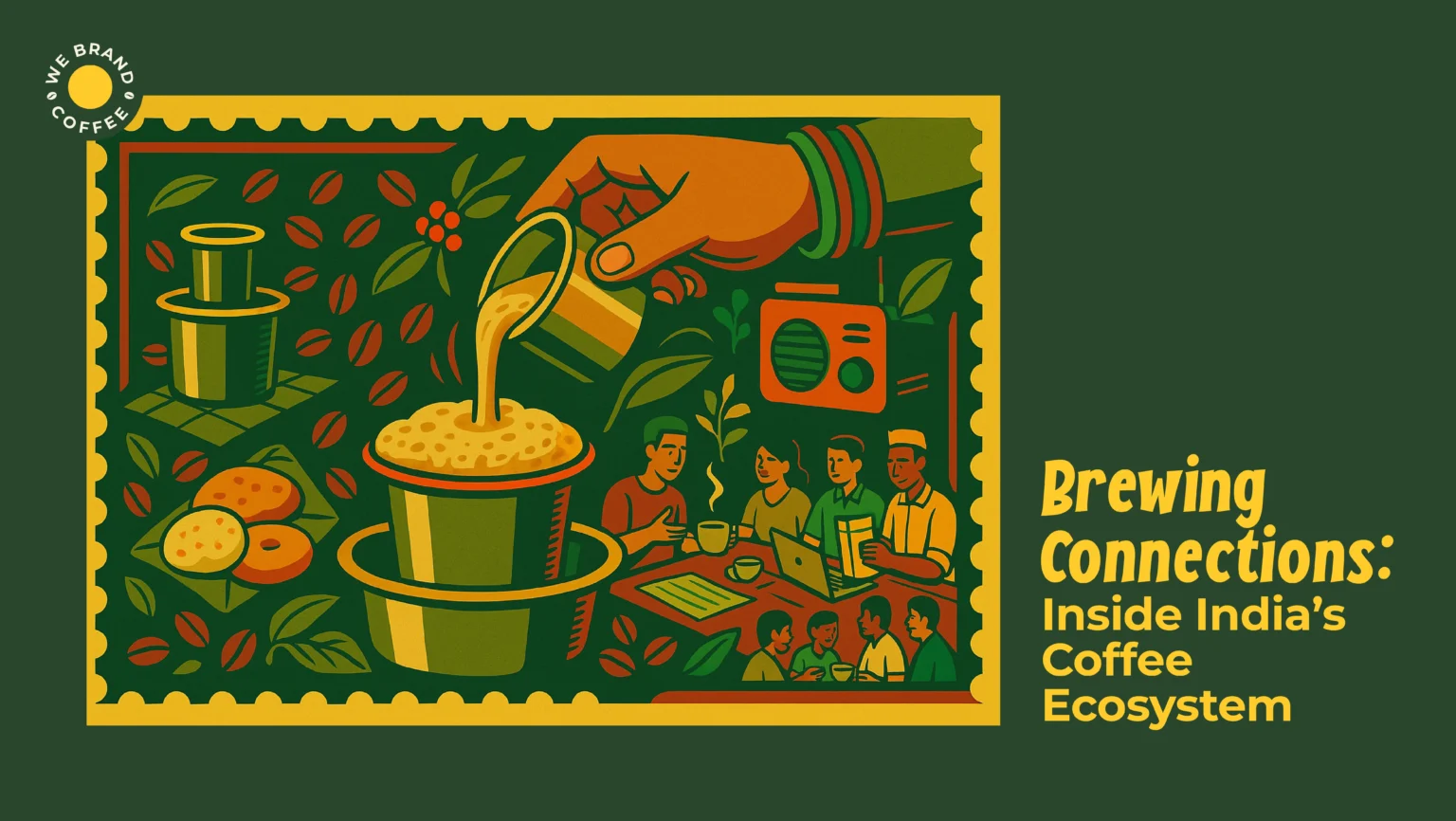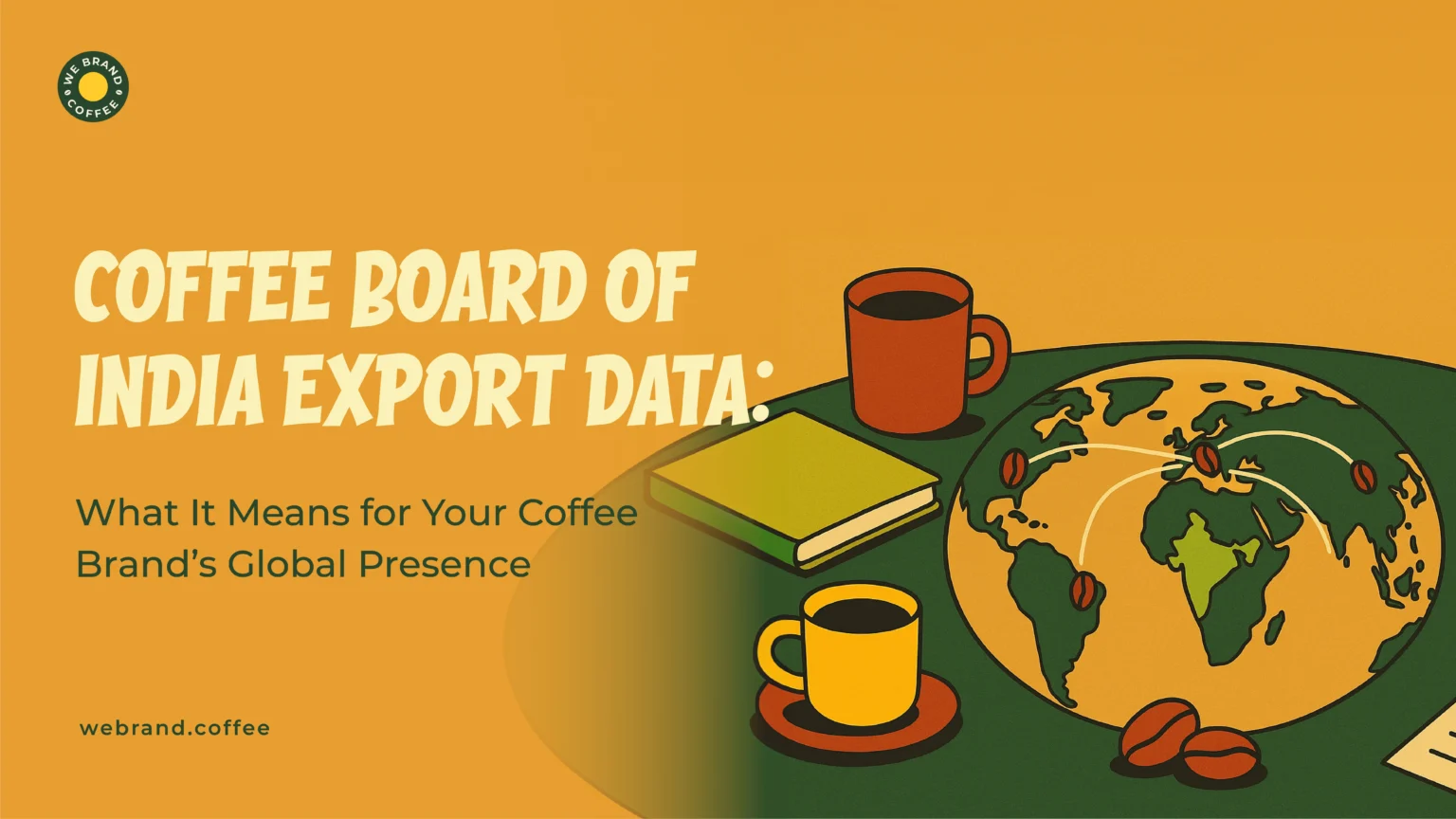From Sunrise to Sips: How Coffee Became the World’s Favorite Morning Ritual?
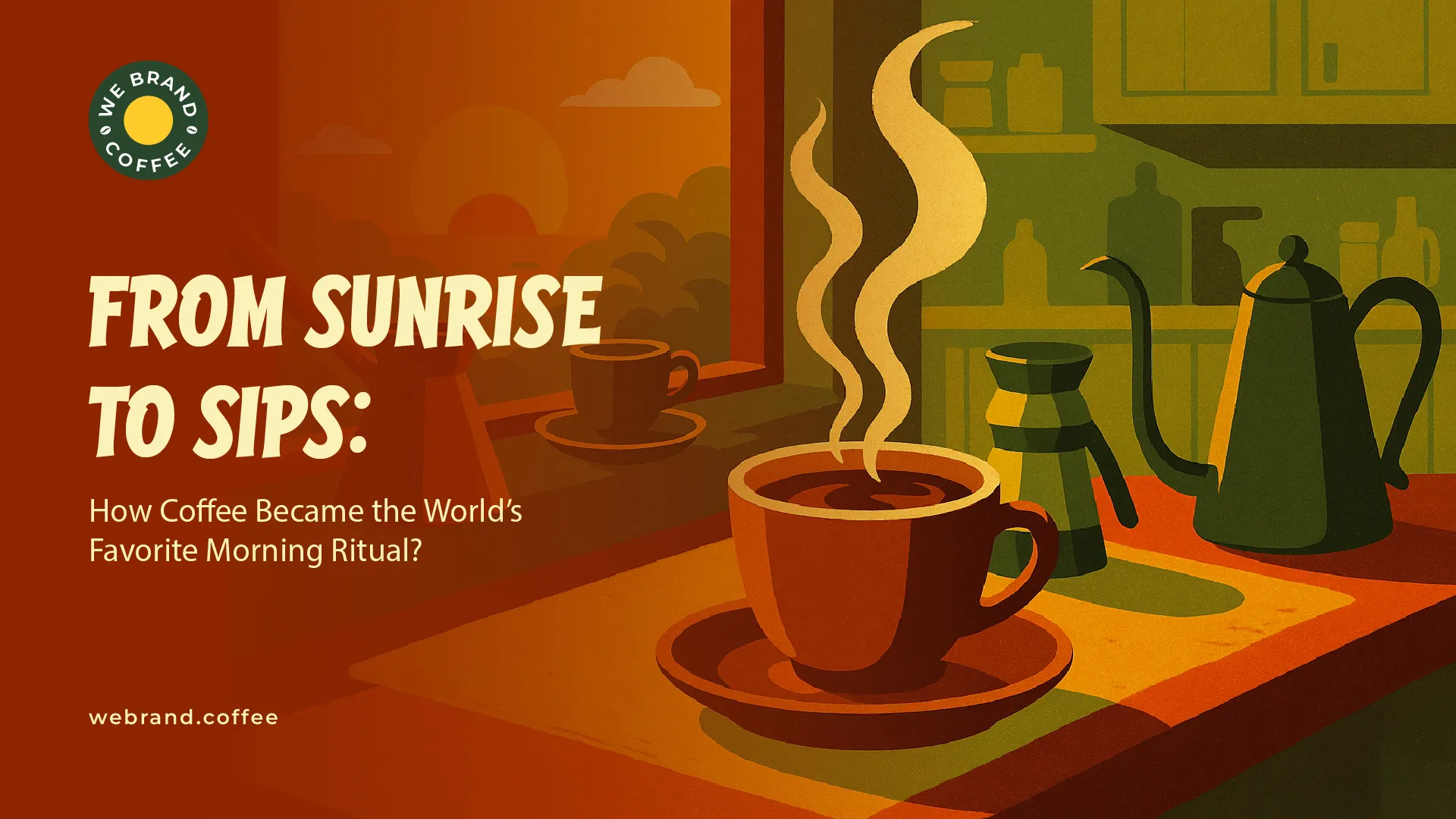
Recent Posts
Share this article:
Are you also the one for whom sunrise doesn’t start the day-coffee does? One sip of coffee and the world begins to make sense, but how did this humble coffee bean become a global ritual? Be it a silky espresso shot in Rome, a steaming cup of coffee drip in Chicago, the gentle pour of filter coffee in Bangalore, or the sweetened kopi in Singapore, morning coffee has become more than a caffeine fix.
Today, coffee is a daily ritual, a comfort, and a kickstart to the chaos of modern life worldwide. With over 2.25 billion cups of coffee being consumed globally each day, how did this humble, bitter bean of coffee transform from a coffee plant in the Ethiopian highlands to this global morning obsession?
Originally, sipped by Sufi mystics to stay awake during midnight prayers, to later worshipped by creatives, thinkers and everyday dreamers; the journey of coffee from an ancient ceremony to modern coffee cafe culture, coffee has made itself into our mornings with the quiet power of a daily ritual done right.
Fast forward to the 21st century, coffee and its role in becoming a morning ritual. A ritual of the first warm cup of coffee, whose coffee smell fills up the kitchen and bridges solitude and society that enjoys the quiet moment of calm in that one cup of coffee before the rush.
So, let us pour ourselves a cup of coffee and find out how coffee has become the world’s favourite morning ritual!
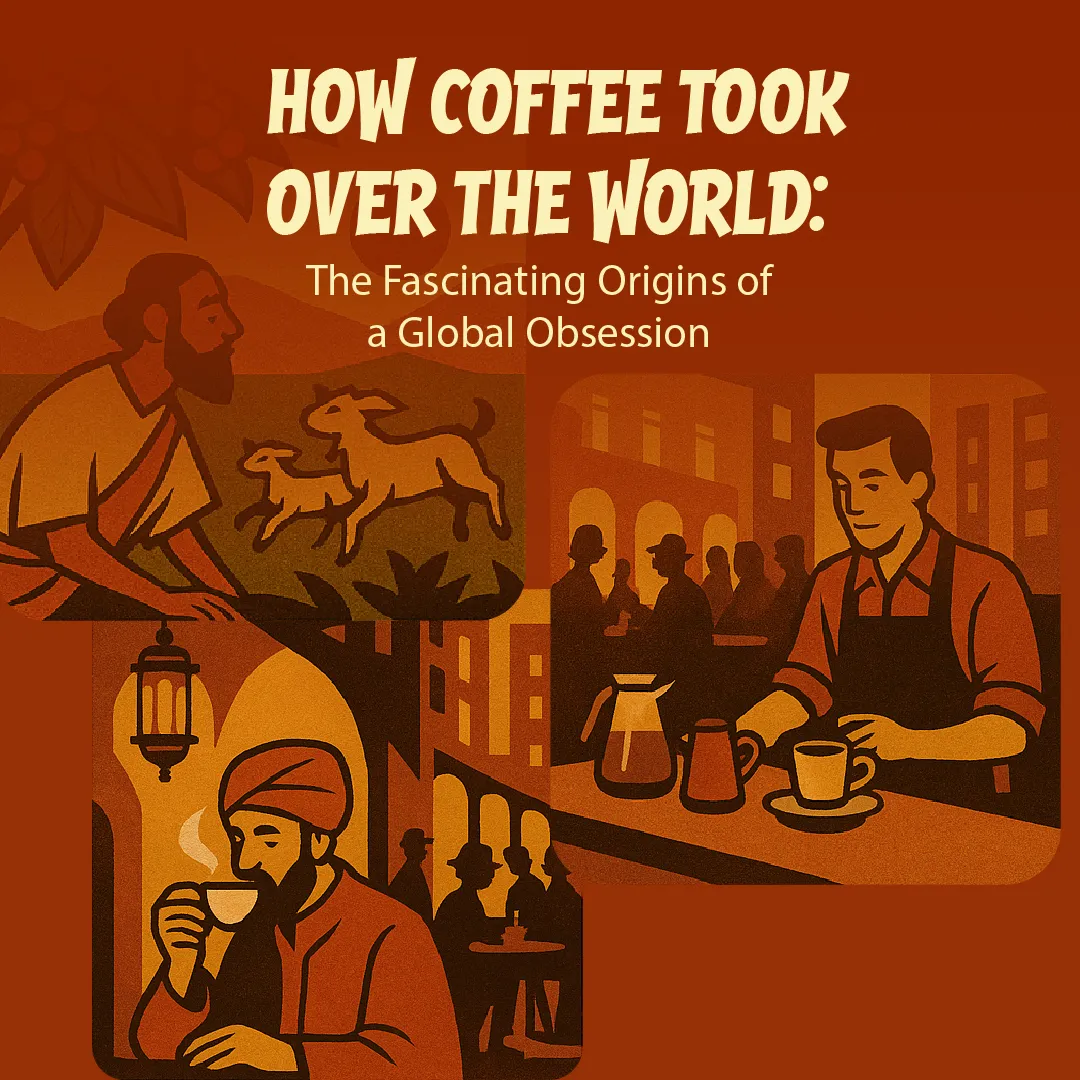
How coffee took over the world: The fascinating origins of coffee’s global obsession
The foremost step in understanding how coffee grew from a part of our routine to the routine is to have an overview of the fascinating origin coffee holds. Long before the existence of city blocks lined up by coffee shops and morning brews, the coffee’s story started in Ethiopia with a curious goat herder named Kaldi.
Intrigued by the bright red cherries of coffee, he tried it himself and felt a newfound alertness from drinking coffee. This unknowingly ignited what became a global phenomenon of coffee obsession today.
Moving ahead in time, by the 15th century coffee cultivation and trade flourished in the Middle East and Europe. Additionally, in the 1600s London, Paris and Vienna gained popularity in the name of Coffeehouses called coffee “the bitter invention of Satan.”
Coffee’s next big chapter unfolded in the Arabian Peninsula, where Yemen played an essential role in coffee becoming an obsession. This resulted in the appearance of Coffeehouses also known as quahveh khaneh across the cities of Mecca, Cairo, and Damascus.
More than the places for drinking coffee, during this time such places for coffee became centers of social life, intellectual exchange and artistic expression.
Thus the vibrant culture of coffee blossomed and united communities for stimulating creativity over a cup of coffee.
Fast forward to the Industrial Revolution, coffee held its ground stronger in the modern workday. Be it people waking up early, commuting and working longer hours, a morning cup of coffee became more than just a habit. This coffee brewed into the urban life where coffee became an inseparable morning ritual and official cement into the global culture.
No matter what the origin coffee story is, standing today coffee has become an unavoidable cup, from enthusiasts of artisanal coffee to the grab and go of instant coffee individuals, the urban landscape brews a modern story of coffee and communication.

Why we crave coffee in the morning: The science behind your daily fix
You open your eyes, and your body seems wired to crave coffee. So, is it just a habit, addiction or something deeper? The reason coffee stands as a religious morning ritual worldwide has to be beyond addiction or habit of coffee. There stands a science explaining that that first sip of morning coffee doesn’t taste good, but rather feels like a mental switch filled.
In hindsight, our body releases cortisol each morning which is a hormone that helps us feel alert and awake. Adding coffee into this natural wake-up hormone, effect of cortisol is amplified.
Coffee helps block adenosine, which is responsible for drowsiness. The result? Increased alertness, focus and energy that comes with coffee consumption.
But how has coffee become a morning obsession? Well, this process of dopamine signaling is quite punctual. Experts suggest that drinking coffee within 30 to 60 minutes of waking up compliments our body’s natural cortisol rhythm rather than disrupting it.
This science behind coffee’s effect lands perfectly with most individuals’ morning, making coffee a global routine.
Additionally, coffee has a more psychological comfort to offer. Be it the therapeutic process of making coffee from boiling water, or grinding beans, to the aroma of nutty coffee filling your kitchen‘s aroma.
This process of coffee making triggers a sense of calm predictability, setting your tone for the day ahead.
So tomorrow morning when you reach for that first cup of morning coffee remember that it is more than a caffeine fix.
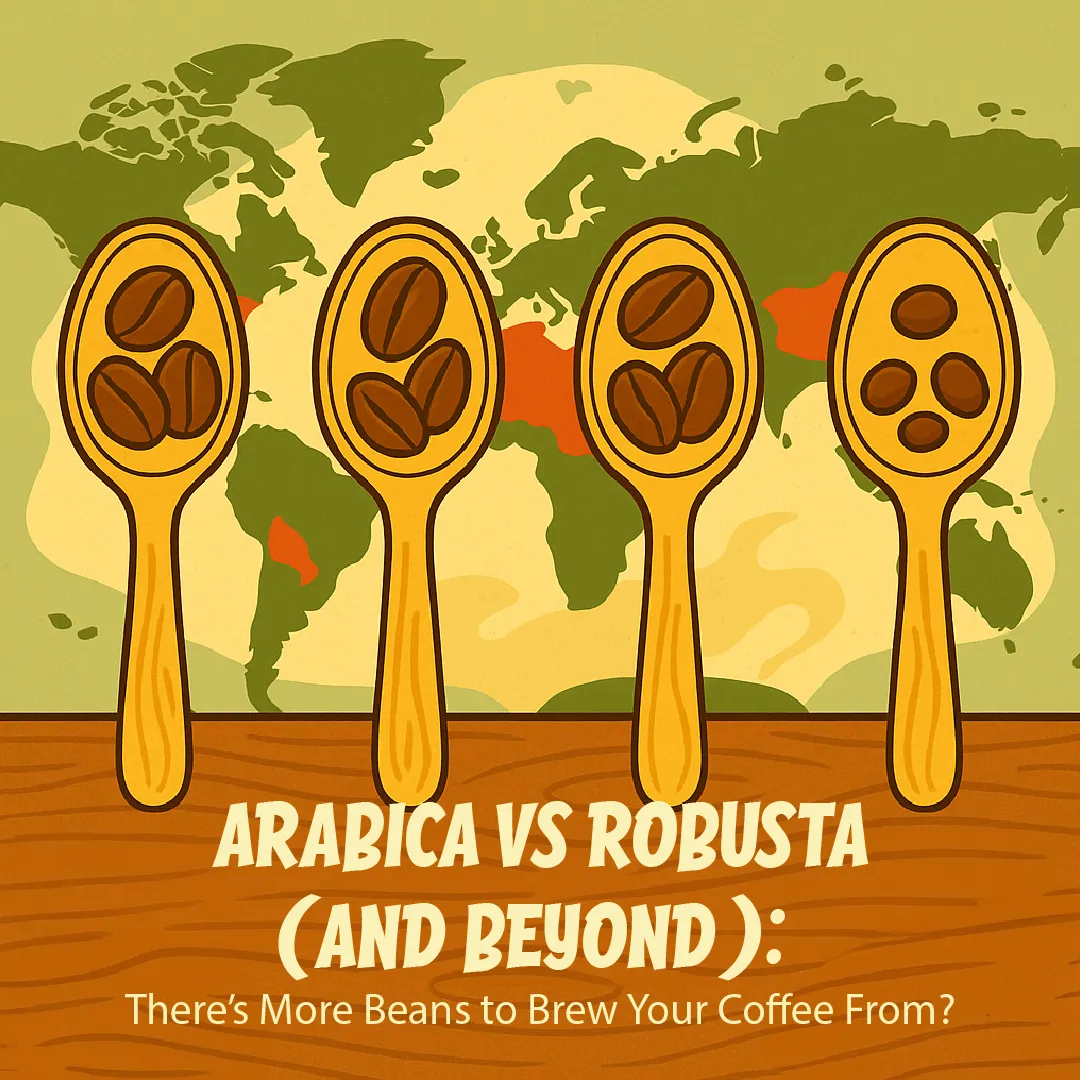
Arabica vs Robusta: There’s more beans to brew your coffee from?
Are you still stuck in the classic coffee debate of arabica and robusta? But what if the best cup of coffee that you can get is neither? The coffee world often brews down to these two names: Arabica coffee and Robusta coffee, however, there exists a wider coffee flavour to explore.
Such coffee beans include Liberica coffee and Excelsa coffee.
To begin with, arabica coffee beans hold about 60-70% of the world’s coffee production. The reason is the smooth coffee, mild flavour of coffee with balanced acidity that carries with itself notes of fruit, chocolate or floral undertones within the coffee depending on where the coffee beans originate from. Often the growing conditions for arabica coffee are high-altitude regions with cooler climates.
Moreover, the arabica coffee beans have a comparatively lower caffeine content, say between 1.2 to 1.5 %, making them less bitter. This makes arabica coffee one of the best coffee for brews such as pour-over, drip and cold brew coffee.
On the other side, Robusta coffee is related as a tougher cousin of Arabica coffee. While it is less popular among speciality coffee fans, robusta coffee plays an essential role in a majority of espresso blends of coffee.
With a strong, bold, and bitter coffee taste backed with earthy and nutty notes, Robusta coffee has a comparatively higher caffeine content ranging from 2.2 to 2.7 %. This gives robusta coffee a more bitter flavour with a stronger kick, making robusta coffee one of the best coffee for espressos, instant coffee and your strong morning brew of coffee.
This was about Robusta coffee and Arabica coffee, but is it all? Well, no beyond these there are coffee beans that are widely underrated. Such coffee beans are:
- Liberica coffee
- Excelsa coffee
Liberica Coffee is surely a rare and often overlooked coffee bean but the coffee does have a cult following. Cultivated primarily in the Philippines, Malaysia and some parts of West Africa, Liberica coffee represents only a small fraction of the global coffee production.
Holding a smoky, woody and floral taste,Liberica coffee has a wild and funky aroma. This adds a distinctive profile to the coffee which is often missing in the arabica coffee and robusta coffee. Hence, if you are a curious coffee drinker then Liberica Coffee has something unconventional for you to start your day with.
Another variety of Liberica coffee, Excelsa coffee is often mistaken as being the same coffee. Grown majorly in Southeast Asia, Excelsa coffee has a tart-like, fruity and layered taste.
Such an intricate taste of excelsa coffee adds a profile of complexity to most coffee blends.
Because of the same depth of coffee flavour, Excelsa coffee is rarely brewed on its own. Rather the coffee is used mainly for developing the enriched flavour in the various coffee blends. So, if you are bored of basic coffee profiles, Excelsa Coffee is waiting to deliver that surprising depth of coffee flavour.
Hence, whether you are brewing a classic pour-over coffee or chasing a wild taste in your morning coffee, the best coffee bean should be the one that not only fits your palate, budget and coffee brewing style but also becomes your perfect cup of coffee.
The Four Six Method: The revolutionary coffee brew everyone’s talking about globally
While as coffee enthusiasts, the debate starts from arabica coffee and ends with excelsa coffee; we at WeBrandCoffee have seen the world of specialty coffee brew better with precision every time. One such innovative coffee brewing process that is prevailing in the coffee maker’s routine is the Four Six Method of coffee pouring.
Invented by Tetsu Kasuya, the 2016 World Brewers Cup Champion the Four Six Method Coffee is a Japanese coffee craft, science and in true spirit an obsession and love for the art of coffee making.
Obsession to the extent that this pour-over coffee practice is flipping the traditional coffee-making practices of Starbucks as well.
But what exactly are the four methods of coffee brewing that are becoming revolutionary in the global coffee community?
To break down this coffee making process, we can begin with segregating two distinct phases. First, four pours of coffee which make 40% and focus on extracting sweetness and acidity of coffee. Secondly, the two pours of coffee which make the rest 60% control the strength and body of the final cup of coffee.
But what is so special about this coffee-pouring method? Well, the beauty of this coffee making method lies in its adaptability. So you are in the mood for a lighter cup of coffee, then just adjust your first four pours of coffee.
Worried about the depth of flavours in your cup of coffee? Tweak the final two pours of coffee.
The reason this four six pour-over method of coffee making became popular among coffee purists is that it is a great intuitive method of fine-tuning your morning coffee brew without the need for any expensive coffee gear.
Be it the customizability factor in that simple cup of coffee with just a scale and a kettle, the clarity of coffee flavour emphasizing sweetness, or balance alongside the complexity of coffee flavour, the four six methods of coffee pouring feel more intimidating and rigid.
Here is a step-by-step guide on how you can brew your morning coffee using the four six methods of coffee pouring:
- Pre-wet your coffee filter and warm your carafe or coffee mug.
- Next, add your preferred coffee and bring your scale to zero.
- Now, divide your coffee pour into a total of 6 phases: First 4 coffee pours which are spaced at 45 seconds apart and the last 2 coffee pours to adjust the strength and mouthfeel of your coffee brew.
The total brewing time of this method of coffee making would be around 3 to 4 minutes at maximum.
Moreover, if you want to excel in this coffee brewing method then here are a few tips for getting that rich and desired cup of coffee each morning:
- Use freshly ground coffee beans. This coffee pouring method prefers light to medium-roasted coffee beans.
- You can use a gooseneck kettle for precisely pouring your coffee.
- Lastly, adjust the first four coffee pours to change the clarity of flavour in your coffee.
To bind in all, the four six method of coffee pouring is more than just another coffee pour-over recipe- rather this coffee-making is a framework that understands and controls how the flavours interact with coffee. Hence, if you are new to specialty coffee or even a seasoned coffee enthusiast planning to level up your coffee brewing game then why not give this method a try to make every cup of your coffee more personal?
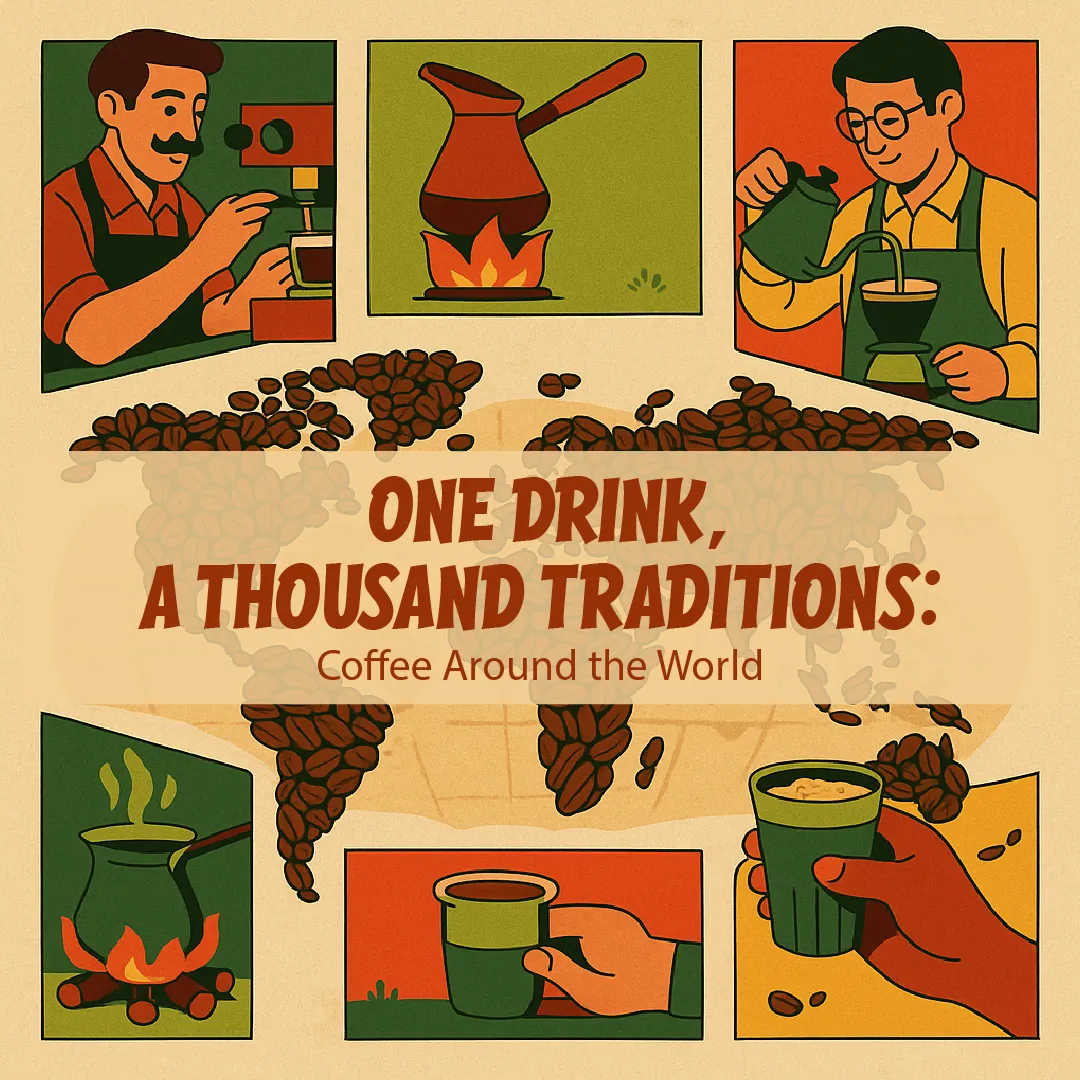
One drink, a thousand traditions: Coffee around the world
This one simple drink, coffee speaks a thousand languages be it the sweet cardamom coffee brews from the Middle East or the bold espresso shots of coffee in Italy, coffee has its distinct global edition.
Apart from the science behind the addiction, why coffee became a global sensation is major because coffee has its own identity and tradition across the globe.
The humble bean of coffee holding its relevance across global cultures makes our simple cup of morning coffee more intricate.
Let us see what cultures coffee brews across the globe.
The Italian Espresso
Famous for the coffee art of efficiency, Italian mornings are incomplete without that quick, concentrated shot of coffee in the form of espresso. Fast, strong and always social, for Italians the first cup of coffee is chugged down standing up only as a cultural ritual for that caffeine fix.
The Turkish Tradition in Coffee
In contrast to the fast and strong coffee, in Turkey coffee is brewed slowly in the traditional small copper pot famously known as cezve. The Turkish uses ultra-fine coffee grounds and no filter. As a result, the coffee ends up being a thick, rich drink with coffee grounds settling at the button of those traditional tiny cups of coffee.
Talking about the coffee culture, Turkish people enjoy their coffee with breakfast as well. Turkish coffee is a UNESCO-recognised coffee tradition.
Japanese Pour-Over Coffee Precision
Japanese are known for their detailed way of life. Not to say the coffee culture is also not left behind. Especially when it comes to pour-over coffee, the Japanese way of coffee making has evolved into a more quiet, meditative art form of coffee making.
To back the intricacies of coffee making, devices such as the Hario V60 have also originated in Japan. Such a combination of art and innovation in coffee making has made morning coffee an intentional ritual in Japan.
The cultural relevance of coffee emphasises clarity, aesthetic beauty and reflecting the craftsmanship through the whole process of coffee making.
Scandinavian Kokekaffe coffee
When it comes to coffee, Scandinavians are also leading the coffee work in per capita coffee consumption globally. Known for drinking multiple cups of coffee throughout the day, the traditional coffee from Norway and Sweden known as kokekaffe is world famous today. The speciality of this coffee lies in the brewing process of the coffee.
Using the coarse coffee grounds to boil in a pot over a flame, the coffee-making tradition is often an outdoor activity. Such an interesting coffee brewing method gives the Scandinavian coffee a strong, rustic as well as unfiltered aftertaste of coffee.
The Indian Filter Coffee
Prevailing across the south of India, most households begin their day with the comforting aroma of filter coffee. Filter coffee offers a strong, rich brew that is an interesting blend of both Arabica coffee as well as Robusta coffee beans.
Expanding from specialty coffee cafes, and single-origin coffee estates to the growing third-wave movement, Indian coffee from Coorg, Chikmagalur to Araku Valley has taken over the global coffee craze.
For this Indian cup of filter coffee, the coffee beans are mostly roasted with chicory as they develop an added depth.
Moreover, the coffee is brewed using a traditional metal filter device. Furthermore, the decoction of filtered coffee is mixed with hot milk and sugar traditionally and served piping hot in the evergreen “dadarah and tumbler”.
The difference in the Indian coffee culture lies in the slow, satisfying tradition rather than a rushed caffeine fix. Instead, for most Indian households, a morning is not completed without this slow coffee ritual.
To sum up the tradition of coffee culture across the globe, it is needless to say that irrespective of the tradition one thing in commonality is the need for that one cup of morning coffee to start your day the right way!

The third wave coffee: How did your daily brew become an art form?
This rise in coffee being the global morning ritual has grown coffee from a simple uncomplicated caffeine fix into an artisan ritual. Such a revolution in coffee culture has redefined coffee from just a morning coffee cup into a well-curated journey of flavour, ethics and innovation in the face of third-wave coffee.
While coffee has largely been viewed as a commodity the past two decades have seen a profound cultural shift in coffee becoming an artisanal craft. The third wave coffee movement is one such coffee craft that has become an epitome of quality, transparency and experience when it comes to coffee.
Marking as a pushback against mass-market coffee, third wave coffee focuses on single-origin coffee beans which highlight the unique flavours of specific farms to using precise coffee brewing tools such as pour-over, siphon, or the espresso machines that help extract the ideal flavours of your preferred coffee beans.
In addition to the quality, third wave coffee holds a significant emphasis on both sustainability and ethics. Be it fair trade with coffee farmers or promoting shade-grown coffee to reduce coffee cultivation waste, the third wave coffee movement notes the great coffee ecosystem with increasing importance among modern consumers.

Why is our love for morning coffee ritual here to stay?
The global obsession with coffee as a morning ritual surely shows its evidence across cultures, but is it just an urban trend or here to stay? Well, coffee is not just about caffeine, coffee has become a medium of connection, comfort and culture amongst individuals.
The comforting smell of a morning’s freshly brewed coffee, that first sip of coffee holds the potential to bring that clarity to your day. So no matter how intense the buzz of coffee releasing dopamine, that “ feel-good” chemical enhanced by just one sip of coffee will forever be stronger. Even the shared social act of “ grabbing a coffee” holds its cultural significance in the modern world as well from a work meeting, a first date to a simple catch-up with a friend is influenced by this simple and humble coffee bean.
Be it the traditional coffee brews or the cutting-edge third-wave coffee movement, coffee will continue to shape and reflect the craft behind a single cup of coffee. Hence, in today’s world where innovations such as smart coffee makers and technologically supported coffee roasting techniques, the morning coffee tradition does not seem anywhere to be going.
Here at WeBrand Coffee, we see coffee as a comforting constant in a world of constant changes.


